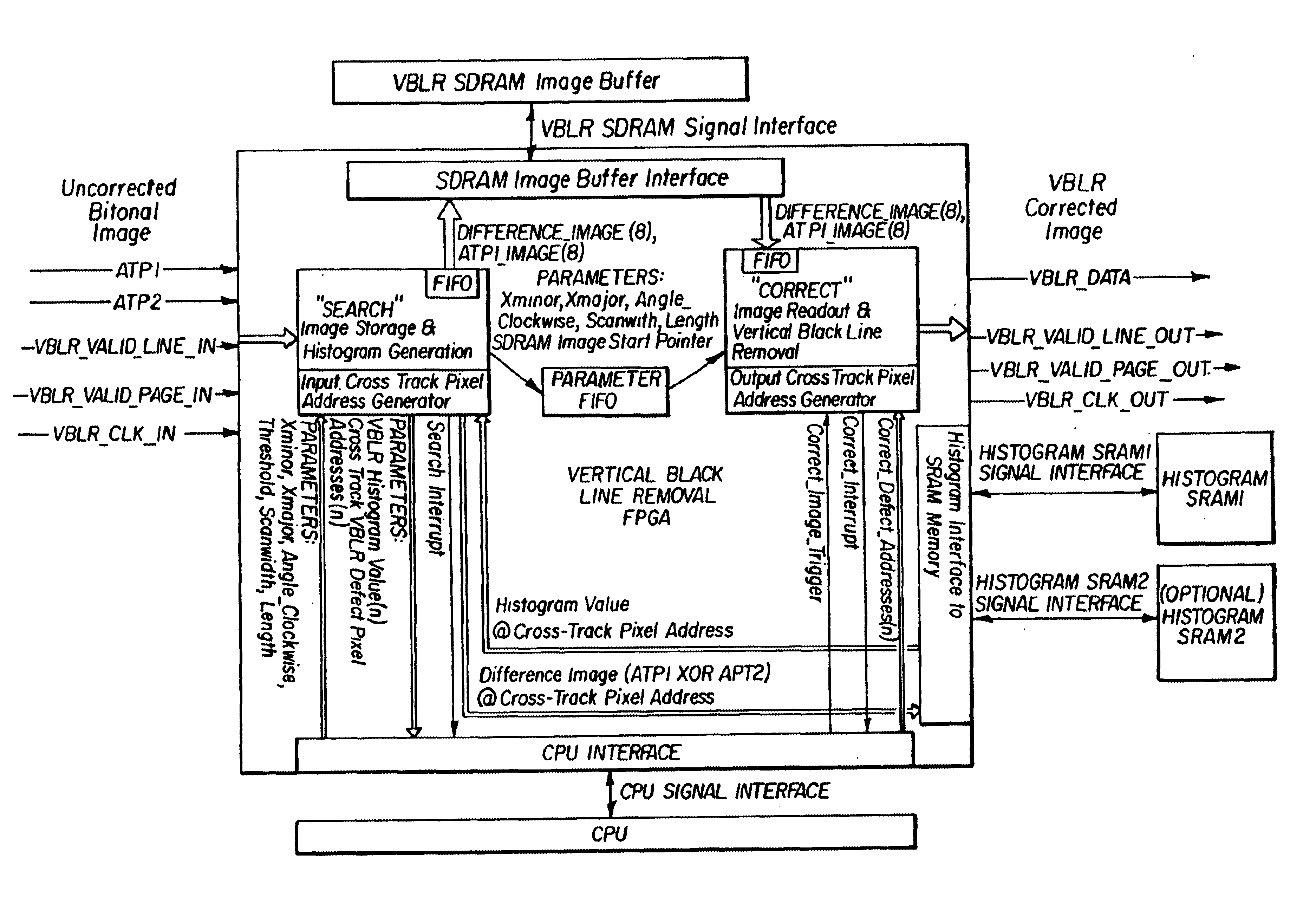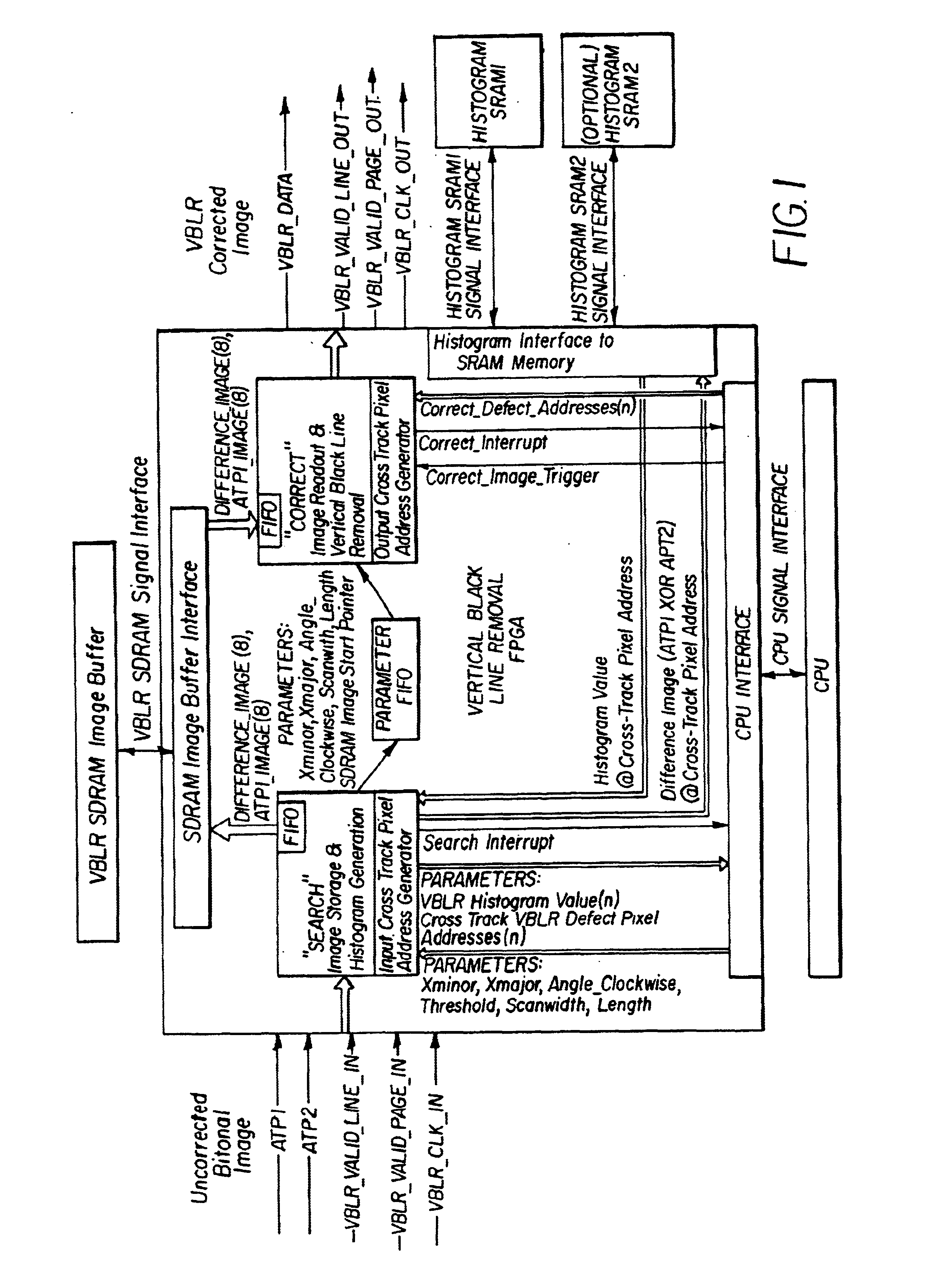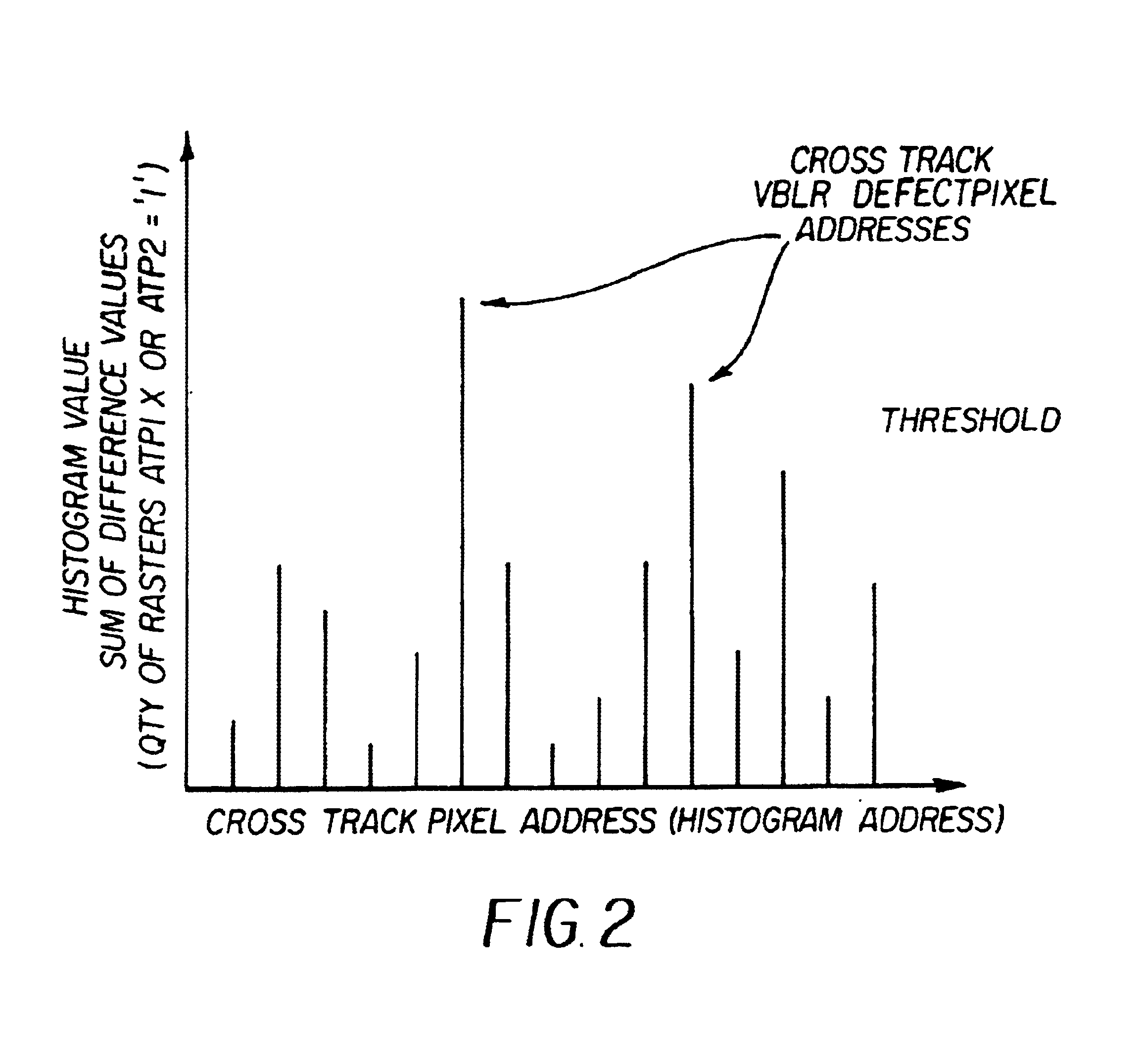Vertical black line removal implementation
a technology of vertical black line and implementation, which is applied in the field of vertical black line removal, can solve the problems of image de-skew needs to be disabled, the sensitivity or gain pattern correction methods used to “calibrate” the scanner will not address this problem, and the operation of host-based optical character recognition (ocr) to be more difficult and error-prone, so as to facilitate the very fast read modify write circuitry, fast and space-efficient
- Summary
- Abstract
- Description
- Claims
- Application Information
AI Technical Summary
Benefits of technology
Problems solved by technology
Method used
Image
Examples
Embodiment Construction
The VBLR hardware processing block is to be placed in the scanners bi-tonal processing chain after the image binarization and the optional de-skew, and therefore will operate on a bi-tonal image data that may also be de-skewed. The VBLR FPGA requires two or three external components to satisfy the VBLR operating requirements. An SDRAM functions as the VBLR image buffer to provide temporary storage of the image data until the VBLR “search” processing has completed and the VBLR corrected image is outputted. One or two SRAMs are used to store the histogram results of the “search” image until the VBLR defects are identified. An interface to the CPU provides the means to read / write VBLR registers, interrupt handling and to temporarily store VBLR defect addresses and the associated VBLR histogram values.
If an image is de-skewed in a prior image processing step, the unwanted vertical black lines can now show up as diagonal lines that are at the angle at which the document was scanned. With...
PUM
 Login to View More
Login to View More Abstract
Description
Claims
Application Information
 Login to View More
Login to View More - R&D
- Intellectual Property
- Life Sciences
- Materials
- Tech Scout
- Unparalleled Data Quality
- Higher Quality Content
- 60% Fewer Hallucinations
Browse by: Latest US Patents, China's latest patents, Technical Efficacy Thesaurus, Application Domain, Technology Topic, Popular Technical Reports.
© 2025 PatSnap. All rights reserved.Legal|Privacy policy|Modern Slavery Act Transparency Statement|Sitemap|About US| Contact US: help@patsnap.com



